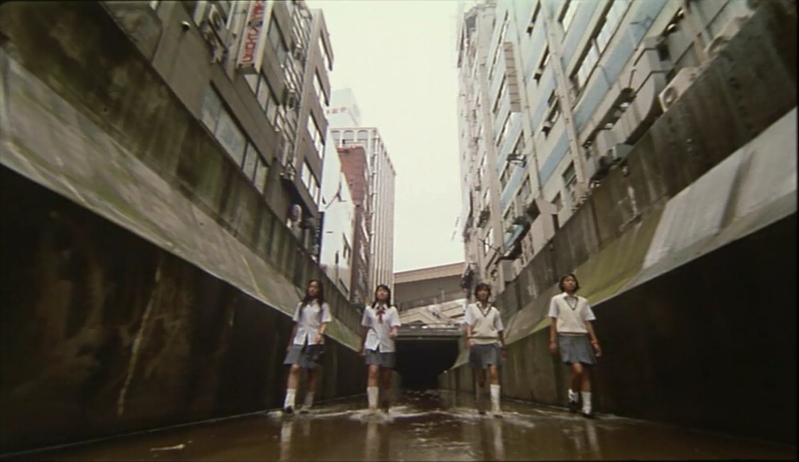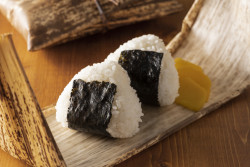
February 4, 2025
The Best Japanese Indie Films You’ve Never Seen
A selection of Japanese films that redefine independent cinema
Japanese cinema is full of hidden treasures, sometimes unknown internationally but a must for independent film lovers. Here is a list of the 10 best Japanese indie films, which, through their audacious approach, offer an eloquent and varied vision of cinema.
1. A Page of Madness (1926)
Director: Teinosuke Kinugasa
This masterpiece of silent cinema tells the story of an asylum guard trying to save his interned wife. One day, their daughter shows up at the asylum to announce her engagement to her mother, triggering a number of subplots and flashbacks that reveal the family’s history.
Created by a group of avant-garde Japanese artists known as the Shinkankakuha (literally “School of New Perceptions”), the film is influenced by German expressionist cinema. With its bold editing, it is full of quick camera movements and cuts, optical inventions and symbolism. It was one of the first films directed by Kinugasa, which featured Eiji Tsuburaya (special effects legend and creator of the Ultraman series) and Yasunari Kawabata (1968 Nobel Prize in Literature).
English-subtitled version here
2. The Naked Island (1960)
Director: Kaneto Shindo
In southwestern Japan, on a tiny island in the Setonaikai archipelago, a farming couple struggles to cultivate an arid land devoid of fresh water. Throughout the year, working in the fields punctuates a daily life that is only broken by rare trips to the continent to sell his produce or to visit his family with his two young children.
The Naked Island is a poignant story, with sound but no dialogue, about the daily struggle of a family living on an isolated island. With a quasi-documentary approach, the film relies on a pared-down mise-en-scène and a powerful visual language to explore human resilience in the face of extreme living conditions. Considered one of Kaneto Shindo’s major works, the film is now celebrated for its unique visual style and poetic exploration of work and the struggle for survival in an indifferent world.
Watch on Amazon Prime
3. Pitfall (1962)
Director: Hiroshi Teshigahara
In a mining town in Japan, a trade unionist is accused of murder by a woman. She is in turn a victim of the murderer. With sets designed by the psychedelic Japanese graphic designer Kiyoshi Awazu and a surreal, avant-garde narrative structure, Pitfall addresses themes of despair and human suffering. It serves as a social critique of worker exploitation, blending realism and fantasy while presenting a haunting ghost story and a stark portrait of human alienation.
Written by the great author Kobo Abe, best known for his novel The Woman in the Dunes (1962), it is Teshigahara’s first feature film and the first of his four film collaborations with the writer.
4. The Man Who Left His Will on Film (1970)
Director: Nagisa Oshima
Nagisa Oshima dedicates his film “to the young people who died in the post-war period, to all those young people who were killed without having intended to die.” The director explores the intentions of the new generation by capturing the actions and thoughts of young people who, denying traditional values, want to escape the oppressive system that chains them.
Between politics and existentialism, Oshima explores the ideas of commitment and artistic legacy through the eyes of a young director, in a society in full transformation in the aftermath of the student protests of 1968.
5. Pastoral: To Die in the Country (1974)
Director: Shuji Terayama
In a dreamlike setting, a child falls in love with his neighbor and decides to leave home. The film stops and the viewer discovers that he is attending a screening. What follows is a reflection on time and memory in a dialogue between the director and his child self.
Shuji Terayama delivers a poetic and deeply introspective work that mixes autobiography, surrealism and social criticism. Navigating between reality and dream, the story explores memory, the desire to escape and the very act of creating. Fragmented and prismatic, the surreal manifestation of Terayama’s childhood is inhabited by carnival numbers, provincial superstitions and a chorus of hooded women. Shot in Aomori, the director’s hometown, the film is set against the backdrop of the haunted Mount Osore, the gateway to the underworld according to Japanese mythology.
6. Tetsuo: The Iron Man (1989)
Director: Shinya Tsukamoto
“I would like viewers to project themselves into my films and feel that they are between life and death,” says Japanese director Shinya Tsukamoto, on his radical, unforgettable first feature film.
Tetsuo tells the story of the transformation of a man into a machine. The film is a monochrome nightmare of flesh and metal, a metaphor for alienation in an increasingly industrialized society. Financed out of his own pocket and shot over 18 grueling months, this depraved film made its author known internationally. With the immortal anime Akira (1988), he ushered in an era of cyberpunk cinema in Japan and has since become a classic of the Japanese underground.
7. Love & Pop (1998)
Director: Hideaki Anno
In phone booths and street corners, in department stores and restaurants, a group of teenage girls practices enjo-kosai or “paid dates”, arranging liaisons with older men attracted by their nubile charm and the innocence of their school uniforms. Hiromi and her three classmates are voluntarily drawn into clandestine dates, but the lure of easy money and the strength of their friendship are no match for the risks they discover in Tokyo’s sexual underworld.
In his first live-action film, legendary anime director Hideaki Anno (Neon Genesis Evangelion) transforms Ryu Murakami’s outrageous novel into a digital cinematic experiment brimming with bold imagery. Shot almost entirely with Sony Handycam handheld cameras, the film is an avant-garde work that multiplies visual and aesthetic discoveries.
8. H Story (2001)
Director: Nobuhiro Suwa
In this essay film that situates itself somewhere between documentary and fiction, filmmaker Nobuhiro Suwa gathers a team in his hometown of Hiroshima to remake the classic post-war film Hiroshima mon amour (1959).
Alain Resnais’ original film delves into the affair between a French actress and a Japanese architect in the reconstructed city of Hiroshima, where personal and public histories intertwine, revealing the fragility of memory and love. In the remake, Suwa explores how the trauma of conflict and its aftermath can be represented in film while reflecting on cinema’s ability to recall and remake the past.
9. Harmonium (2016)
Director: Koji Fukada
In a discreet Japanese suburb, Toshio and his wife Akie lead a seemingly peaceful life with their daughter. One morning, Yasaka, an old friend of Toshio’s, shows up at his studio after spending a decade in prison. To Akie’s surprise, Toshio offers him a job and a place to live. Little by little, Yasaka interferes in family life. He teaches their little girl the harmonium, slowly gets closer to Akie and gradually disturbs the family before causing irreparable damage.
In this dark and gripping drama, Fukada examines the fractures of a family after the arrival of an old friend with a troubled past. With increasing tension and stark mise-en-scène, Harmonium explores guilt, forgiveness and buried secrets. A poignant work that won the Jury Prize in the Un Certain Regard section at the Cannes Film Festival.
10. One Cut of the Dead (2017)
Director: Shin’ichiro Ueda
The film follows a team that decides to shoot a zombie movie in a single sequence shot in an old, abandoned warehouse from the Second World War. The situation escalates when they encounter real zombies attacking them.
Praised for its originality, writing and humor, and made on a small budget of just $25,000, the film was shot in eight days by students from Tokyo’s Enbu Seminar drama school. Initially screened for a week in a small arthouse theater in Tokyo, the film benefited from greater visibility due to positive word-of-mouth, before being distributed internationally. It made box office history by earning more than a thousand times its budget.
If you enjoyed this list of the best Japanese indie films, check out our article: 12 Japanese LGBTQ+ Films To Watch







